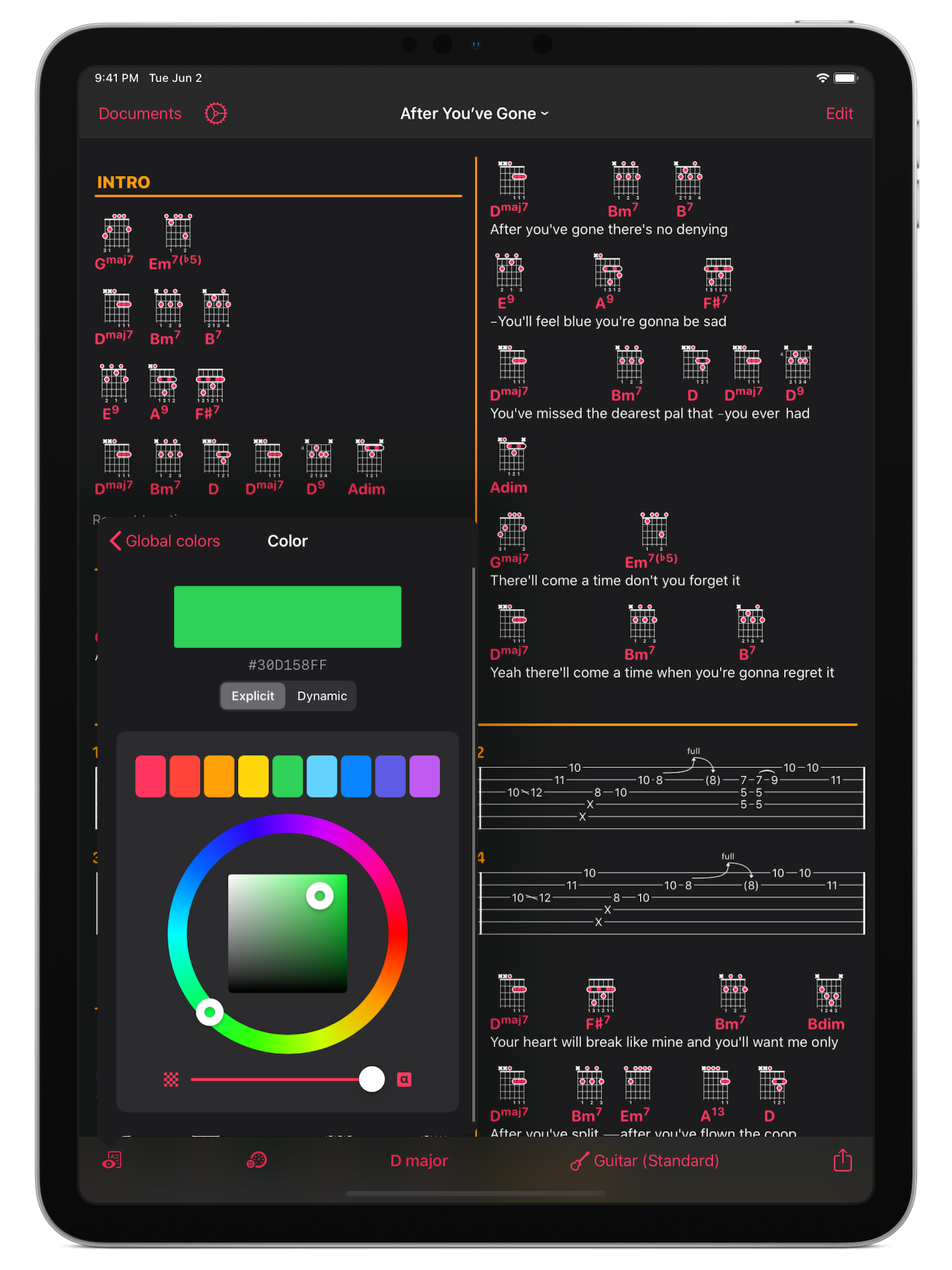Documentation
Getting Started
Basics
A quick explanation about the philosophy behind SongKit and why things are organized the way they are.
First Steps
This tutorial describes the first steps to create a song in SongKit.
Settings
A tour of the settings you may encounter in SongKit.
Import Songs
Find out how to import songs in SongKit.
Documents Types
SongKit generates various documents. Find more information about them.

Glossary
Here are a few terms used and their meaning in the realm of the app
- Dynamic
- Something is dynamic when it adapts automatically from current parameters. It is not stored in the document and may be different on other devices. It can be a dynamic voicing or a dynamic voice.
- Chord
- In SongKit a chord is independent from the instrument. It consists in a Tonic, a Chord Symbol, and optionally a Bass. It doesn’t contain information about a particular realization on an instrument (a voicing).
- Voice
- A voice characterize a performer of the song: its name and its instrument. A song can store information for several voices, like Guitar I or Piano.
- Chord voicing
- A specific way to play some chord. It depends on the instrument and its configuration. It can be explicitly selected by the user. Otherwise, it is generated by the app and is called a Dynamic Voicing.
- Palette
- An annotation collection that can be used when writing a song.
- Style
- A template which defines how the song looks. It can work for devices or PDF documents.
- Tablature (or tab)
- A graphical representation of the notes played on a guitar-like instrument. Tabs are not available when the current instrument is a piano.
- Lyrics
- Some text that is sung in a song. You can also attach annotations to lyrics.
- Comment
- Some text which provides indications about the content of the song
- Transposing
- It means changing the display key of a song. You can transpose to another key, or offset the current key by a certain amount of semitones.
- Key of a song
- This corresponds to the intrinsic key of a song, that is the base key from which chords refer to. For example, in the key of G major, Am refers to the 2nd minor triad for this tonality. You can also choose to display the song in another key (Transposing), or change this key to another without changing the effective chords (Setting the key).
- Display key
- This is the key currently used to display the song. Changing the display key is equivalent to transposing the song.
- Style scale
- A numerical factor to grow or shrink elements of the interface without changing the size of the screen or the paper. It allows to quickly adjust the layout to different screen configurations, without having to touch the style.
You may ask yourselves what are the differences between SongKit and my other app Chord!. You can find more information on the topic here.